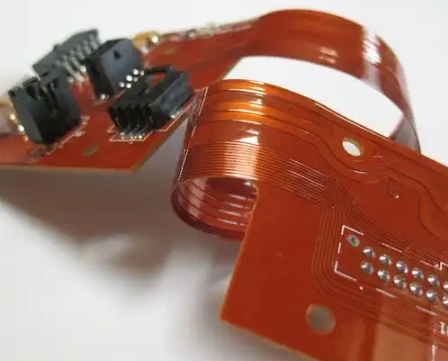The selection of PCB substrate type involves a number of factors,including application area,cost,performance requirements, and manufacturing process.
1.Rigid PCBs
Rigid PCB is one of the most common PCBA substrate types,which is made of rigid material (such as FR4) with excellent mechanical strength and stability. Rigid substrates are suitable for most electronic devices such as computers, communication devices and consumer electronics.They can carry complex circuits and components and provide stable electrical performance.The manufacturing process of rigid substrates is mature and the price is relatively low, which is suitable for medium and high-end electronic products.
2.Flexible PCB
Flexible PCB is a type of PCB substrate made of flexible materials with excellent bendability and foldability.They are typically thinner and lighter than rigid substrates and are suitable for applications that require higher weight and volume,such as mobile devices,wearables and automotive electronics.Flexible substrates can be routed in three dimensions and can be bent and folded,providing greater design freedom.However,the manufacturing process for flexible PCB is more complex and costly.
3.Rigid-Flex PCB
Rigid-Flex PCB is a combination of rigid and flexible substrate with the advantages of both.It consists of rigid and flexible layers cross-stacked to meet the needs of complex wiring to a certain extent, and provide flexibility.Rigid-flex substrates are widely used in applications that require both rigid and flexible connections,such as folding cell phones, medical devices, and aerospace electronics. However,the process of manufacturing rigid-flexible PCB is more complex and relatively costly.

rigid-flex board
4. HDI PCB
High Density Interconnect PCB is a PCB substrate that realizes high density wiring in a relatively small area.It uses micro-fine line widths,line spacing,and via holes to achieve higher component density and better signal transmission performance.HDI PCBs are suitable for applications that require high-speed signal transmission and miniaturized designs,such as mobile devices,high-performance computers,and communications equipment.HDI PCBs are relatively costly due to the more complex manufacturing process.
5. RF PCB
RF PCBs are PCB substrates specifically designed for RF signal transmission and processing.They utilize special materials and wiring techniques to ensure stability and low loss in the high frequency range.RF PCBs are widely used in wireless communications, radar systems and satellite communications.Due to their special design requirements and material selection,RF PCBs are relatively expensive to manufacture.
6. Metal Core PCB
A metal core PCB is a PCB substrate with a metal layer coated on the surface of a rigid substrate.This type of substrate provides excellent thermal performance and is suitable for applications that need to handle high power and high temperatures,such as LED lighting, power modules and automotive electronics.Metal core PCBs have good thermal conductivity and mechanical strength,but are more expensive to manufacture than other substrate types.
7. Thick Copper PCB
Thick Copper PCB is a type of PCBA substrate with a high copper layer thickness.They are suitable for applications that need to handle high currents and high power,such as battery management systems for electric vehicles,industrial control equipment and power supply systems.Thick Copper PCBs offer low resistance and good heat dissipation,but they are more costly due to special manufacturing processes and material requirements.
There are many types of PCB substrates to choose from,weighing application requirements,cost and performance to ensure the perfect match between electronic product design and functionality.As technology evolves,PCB substrates will continue to innovate to meet the higher demands of future electronics.